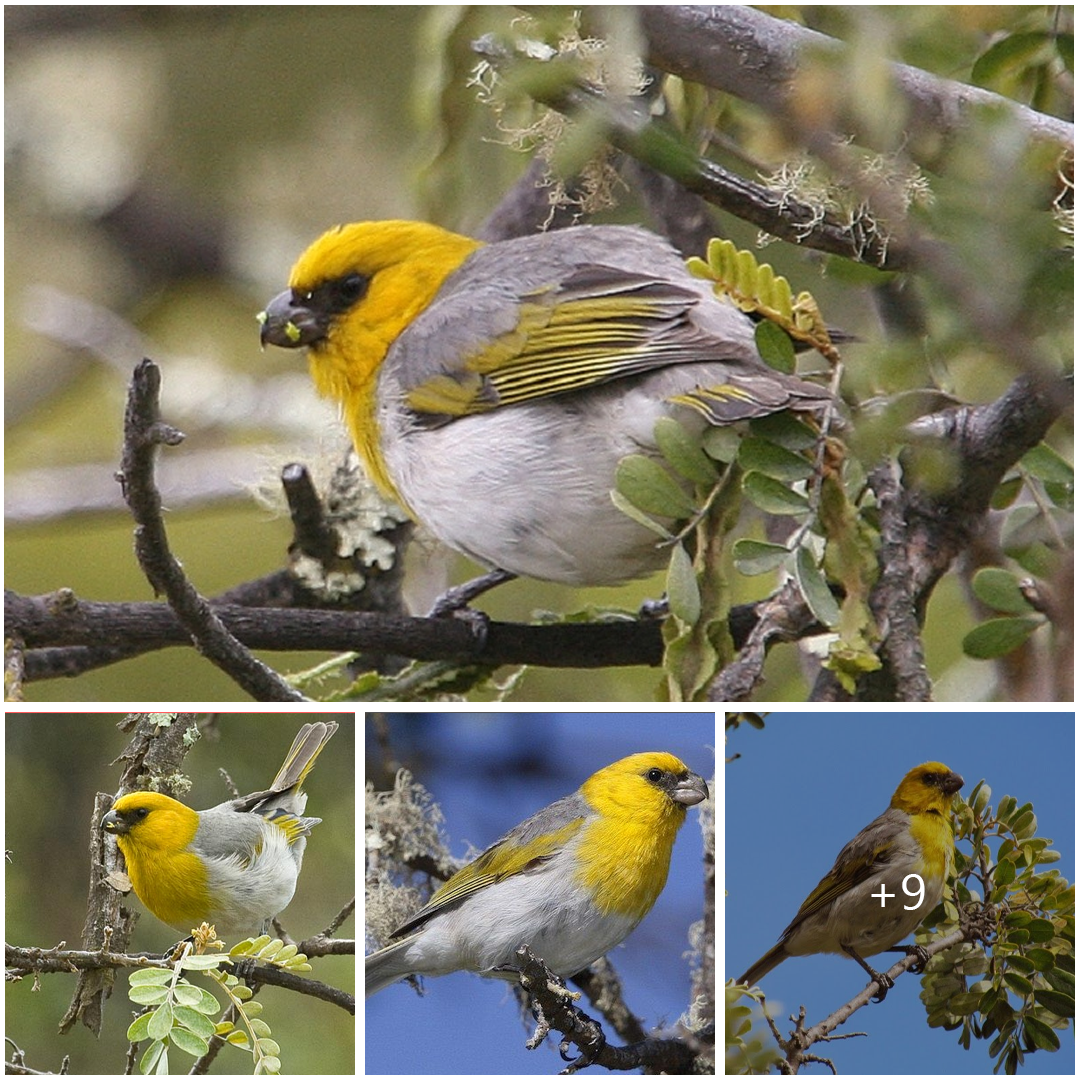
The Palila (Loxioides bailleui) stands as a symbol of both the beauty and fragility of Hawaii’s unique ecosystems. Endemic to the island of Hawaii, this striking songbird has faced numerous challenges that have led to its classification as critically endangered. Let’s explore the fascinating world of the Palila, examining its characteristics, habitat, threats, and conservation efforts aimed at preserving its existence.
Physical Characteristics
The Palila is a medium-sized finch with distinctive markings that set it apart from other bird species in Hawaii. Its plumage is predominantly grayish-brown, with a pale yellow breast and belly. One of its most notable features is a distinctive yellow patch above its beak, which adds a splash of color to its otherwise subdued appearance. The Palila also possesses a stout, conical bill adapted for feeding on seeds and plant matter, reflecting its primarily granivorous diet.
Habitat and Distribution
Historically, the Palila inhabited the dry forests and shrublands of the Mauna Kea volcano on the island of Hawaii, where it fed on the seeds of the native mamane tree (Sophora chrysophylla). However, habitat loss and degradation have significantly reduced the Palila’s range, confining it to a small area within the Mauna Kea Forest Reserve.
The Palila’s habitat is characterized by a unique combination of montane forests, shrublands, and open grasslands, which provide essential resources for nesting, foraging, and roosting. Despite its limited distribution, the Palila plays a vital role in the ecological balance of its ecosystem, contributing to seed dispersal and plant regeneration.
Feeding Behavior and Diet
As a specialized granivore, the Palila relies primarily on the seeds of the mamane tree for sustenance. It uses its powerful bill to crack open the hard seed pods, extracting the nutritious seeds within. The mamane seeds are not only a crucial food source for the Palila but also serve as a primary food item for other endemic bird species in Hawaii, highlighting the interconnectedness of the island’s ecosystems.
Conservation Status and Threats
The Palila faces numerous threats to its survival, chief among them habitat loss, invasive species, and climate change. The conversion of native forests into agricultural land, urban development, and grazing activities has resulted in the destruction and fragmentation of the Palila’s habitat, reducing the availability of food and nesting sites.
Invasive plant species such as fountain grass (Pennisetum setaceum) and feral animals like sheep and goats further exacerbate the Palila’s plight by outcompeting native vegetation and degrading habitat quality. Additionally, climate change poses a significant threat to the Palila’s habitat, altering precipitation patterns and increasing the frequency and intensity of wildfires, which further degrade its already fragile ecosystem.
Conservation Efforts
Efforts to conserve the Palila and its habitat are underway through a combination of habitat restoration, predator control, and captive breeding programs. Conservation organizations, government agencies, and local communities are working together to restore native forests, control invasive species, and mitigate the impacts of climate change on the Palila’s habitat.
Captive breeding programs have been established to bolster wild populations and provide a safety net against extinction. These programs involve breeding Palilas in captivity and releasing them into protected areas where suitable habitat conditions have been restored.
Conclusion
The Palila serves as a poignant reminder of the urgent need to protect Hawaii’s unique biodiversity and fragile ecosystems. Through concerted conservation efforts and community involvement, we can work towards ensuring a future where the Palila and other endemic species thrive in their natural habitats. By preserving the precious natural heritage of Hawaii, we not only safeguard the Palila’s existence but also enrich our own lives with the beauty and wonder of these remarkable songbirds.





